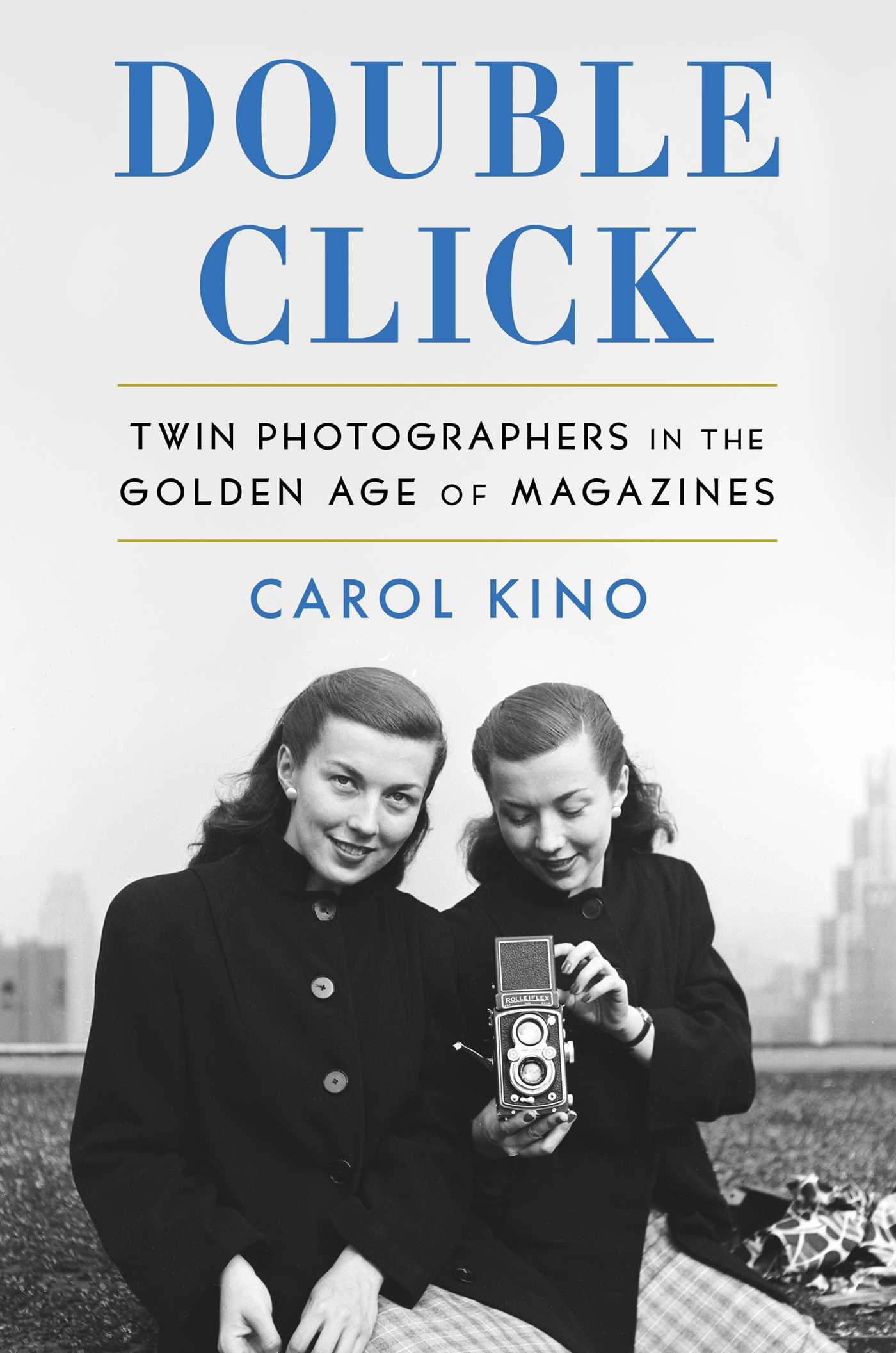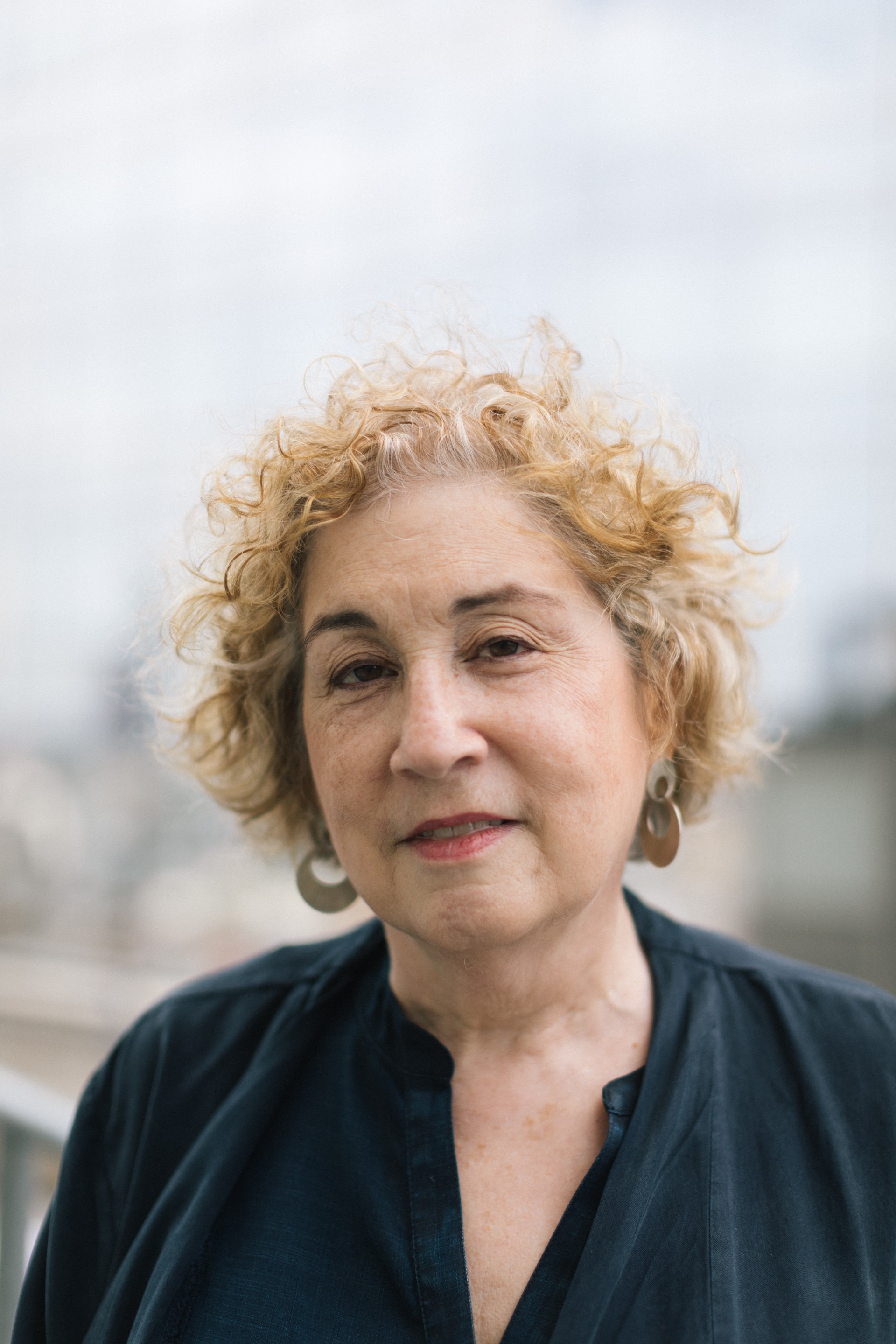Every season, Chico's recommends a bestselling book that connects with your lifestyle, expands your horizons, and excites the senses. In honor of International Women's Day which is March 8, we've chosen a book that celebrates strong, independent women — Double Click by Carol Kino. A captivating blend of biography and cultural reportage, Double Click reveals the lives of pioneering twin fashion photographers Frances McLaughlin-Gill and Kathryn Abbe, whose rise to prominence during New York’s glamorous magazine heyday of the late 1930s and 40s reflected a brief window of expanded opportunities for women before and during World War II. A riveting dual biography for fans of Ninth Street Women and The Barbizon. Scroll down for our interview with the author.

About DOUBLE CLICK
The McLaughlin twins were trailblazing female photographers, celebrated in their time as stars in their respective fields, but have largely been forgotten since. Here, in Double Click, author Carol Kino provides us with a fascinating window into the golden era of magazine photography and the first young women’s publications, bringing these two brilliant women and their remarkable accomplishments to vivid life.Frances was the only female photographer on staff in Condé Nast's photo studio, hired just after Irving Penn, and became known for streetwise, cinema verité-style work, which appeared in the pages of Glamour and Vogue. Her sister Kathryn’s surrealistic portraits filled the era’s new “career girl” magazines, including Charm and Mademoiselle. Both twins married Harper’s Bazaar photographers and socialized with a glittering crowd that included the supermodel Lisa Fonssagrives and the photographer Richard Avedon. Kino uses their careers to illuminate the lives of young women during this time, an early twentieth-century moment marked by proto-feminist thinking, excitement about photography’s burgeoning creative potential, and the ferment of wartime New York. Toward the end of the 1940s, and moving into the early 1950s, conventionality took over, women were pushed back into the home, and the window of opportunity began to close. Kino renders this fleeting moment of possibility in gleaming multi-color, so that the reader cherishes its abundance, mourns its passing, and gains new appreciation for the talent that was fostered at its peak.
Complete with a gorgeous selection of color and black-and-white photographs, Double Click captures a pivotal time in our cultural history.
About the Author: Carol Kino

Carol Kino’s writing about art, artists, the art world, and contemporary culture has appeared in publications such as The New Yorker, The Wall Street Journal, The New York Times, The Atlantic, Slate, Town & Country, and just about every major art magazine. She was formerly a fellow at the Dorothy and Lewis B. Cullman Center at the New York Public Library and the USC Annenberg/Getty Arts Journalism Program. She grew up on the Stanford campus in Northern California and lives in Manhattan. Double Click is her first book.
Tell us a bit about yourself and your background as a writer.
I’ve written about art for years, mostly for general-interest publications like TheNew Yorker, TheWall Street Journal, TheNew York Times, TheAtlantic, Town & Country, and Slate, and also for art magazines. I did many different types of writing before I realized art was my subject–and I had been writing about art for a while before I learned we had art dealers in the family! (I might write about them someday.)I love writing about art because it has allowed me to write about every subject from figure drawing, perfume, and Instagram to the U.S. military. The art world is also filled with fascinating personalities who make for great stories. Plus, it’s exciting to report on art history as it’s being made. I tried to recreate that feeling with this book.
What inspired you to write this book?
I learned about the twins when I wrote about a show involving Frances and her husband, who was also a great photographer. Through that, I discovered her twin had also married a photographer, and that his father had been a photographer, too–one who’d been world-famous during the Jazz Age. So the whole family was kind of a photographic dynasty. Their creative circle was filled with famous artists, designers, photographers, and models, and they were all really colorful, glamorous figures. You can just imagine what their casual family snapshots looked like! Yet at the same time, the twins had to deal with the problems many women experience: how do I handle work and children? How do I handle my husband’s first wife, and my stepchildren? Because there were many blended families during their time, too. So this just had the makings of a terrific story.
Also, while I had profiled many female artists who struggled for success and finally attained it later in life, I loved the idea of writing about women who’d been super-successful when they were young, and had kept going, with many ups and downs, till they were old. I wanted people to finish the book asking, “How could we forget about these amazing people?”
‘Double Click’ is a wealth of detailed historical knowledge not only about the McLaughlin twins, but also about the golden age of magazines. What’s the most interesting thing you learned in your research?
That there were many fascinating women who were active as photographers, designers, and art directors in the 1930s and 1940s–people who really changed the way we dress, see ourselves, and see the world, whose names we barely know today. Also, young women were interested in careers long before the women’s movement of the 1970s, and their lives had so much in common with our own! Publishers began creating career girl magazines, like Mademoiselle, Glamour, and Charm, as early as the 1930s to satisfy this market. And these publications were so successful that traditional fashion magazines, like Vogue and Harper’s Bazaar, had to scramble to keep up. All this happened before America got into the war, when women were asked to take over men’s jobs so they could fight.
But everything changed in 1947, after the men came home. Young women were suddenly expected to give it all up to get married, have babies, and raise families. That’s when the idealized image of the devoted 1950s housewife was born, and it was suddenly like this earlier career-girl period had never happened. So it was a huge surprise to me, a baby boomer who grew up in the era of the stay-at-home mom, to discover that women had been liberated long before the 1970s.
Although the McLaughlin sisters were twins in the same field and had so many parallels in their lives - what were the biggest differences you saw between them?
I was able to obtain several interviews with the twins from the 1970s and 1990s. On these recordings and videos they both come across as smart, quick-spoken and really funny, but they both had very different personalities, and it’s easy to see that even in these interviews. Kathryn is bubbly, eager to please, and glows toward the camera—you can see this even in photographs–while Frances is always more reserved and self-contained. Kathryn was the one who always had a steady boyfriend (although maybe she dated other boys at the same time). I got the impression that Frances had boyfriends, plural–until she found the right guy.
As uncommon as it was for women to become fashion photographers in the mid-20th century, it was even more unusual for twin sisters to both go into this field. Based on your research what do you think was the biggest driving force behind this?
The twins were incredibly smart, and driven to excel and to work. In their small town in Connecticut, they were always at the top of their class, trading places by a fraction of a point, and involved in every artistic extra-curricular activity imaginable. They also had a camera-crazy aunt who photographed them constantly, and she gave them a very good camera when they graduated from high school. So they were already primed for creative careers when they went away to art school in Brooklyn.
At that point, photography was really the hot new medium for illustration: Life magazine had been introduced the previous year, picture publications were springing up left and right, and fashion magazines started running photos of models on the cover. Their school had just built a photo lab. One of their classmates told me that everyone wanted to learn photography because it was the cool new thing to do. So the twins talked the head of the department into giving them special lab privileges—and as soon as they started taking pictures, they decided to become photographers. They were always very in sync until they had to make separate choices based on their jobs and love lives.
There are many well-known photographers and editors of this era mentioned throughout the book. Who do you think had the biggest impact on each of the sister’s careers?
The twins worked with very famous figures, like Alexander Liberman, who used to run Conde Nast, right after he became art director of Vogue, and Carmel Snow, the famous editor of Harper’s Bazaar. Both twins were also great friends with Irving Penn and his wife, the model Lisa Fonssagrives-Penn. But they benefited early on because they had very talented and generous women as mentors.
At school they were discovered by Margaret Hockaday, a Harper’s Bazaar editor who was recruiting college girls as models and photographers for College Bazaar, an experimental teen publication. Hockaday stayed in their lives, finding them jobs after graduation and hiring them later for interesting projects after she’d started her own company–she became a famous ad woman during the Mad Men era. Another great influence was Toni Frissell, Vogue’s star woman photographer in the 1930s and early 1940s. She hired Kathryn as an assistant and let her handle many of her own photography assignments. Later, when Liberman was looking for new young photographers, Toni suggested he interview Frances, the other twin: this resulted in Frances being hired as the lone woman photographer in the studio of Conde Nast, the publisher of Vogue and Glamour. At 23, she was suddenly a star.
Were you surprised to learn how wartime played such a major role in shaping New York City as a fashion capital?
Yes, that was amazing! Mayor Fiorello LaGuardia was famous for hating ladies’ hats, but he took the fashion business very seriously. He’d previously been a lawyer with the garment industry, so he knew how economically important it was–not just for New York but for America. In 1940, after the Second World War began and the Nazis were marching through Europe, he gave a speech to the Fashion Group, a professional organization whose members included some of the most powerful people in the business. He said it was time for New York to think about taking over from Paris as the fashion capital of the world, and he wanted to see the world wearing American sportswear, a type of clothing our designers had invented. Reading his speech and the news reporting on it now is hilarious, because a lot of people clearly thought La Guardia had gone off his rocker. But a few weeks later, the Nazis entered Paris and European fashion shut down. So New York City had to step up and take over!
We found it interesting that magazines in the mid-20th century drew so much inspiration and content from real college students and women. Do you see a parallel today with social media and user-generated content becoming such a popular form of media?
Absolutely. The fashion designed by women for women by women in the 1930s and 1940s anticipated much of what we wear today – wrap dresses, pants, jumpsuits, separates, tights, ballet flats, etc. In exactly the same way, women taking pictures of each other, or of themselves–which is something that happened increasingly in the 1940s, as cameras became more accessible and easier to use, and magazines held contests that encouraged amateurs to show off what they could do–is totally echoed by our ability to take selfies and professional-looking pictures with smartphones and share them on social media.
What was the biggest takeaway for you after writing this book and what message do you hope your readers walk away with?
If someone tells you about the true geniuses in a creative field, and those geniuses are all men, please ask them to name some women! I made it my mission to look for the women in every area I discussed in this book, and discovered many incredible talents that we have overlooked.
Any new projects or books you’re working on that you can share?
I’m currently working on a book of photography about this period.With the help of my wonderful editor, I was able to get 24 pages of photos into the book, but there are many more great images that I discovered and I’d love to be able to share them with readers. Beyond that I’m currently sorting through a lot of ideas for my next book.It will probably be something about the same period, or about women, or maybe a combination of both.





